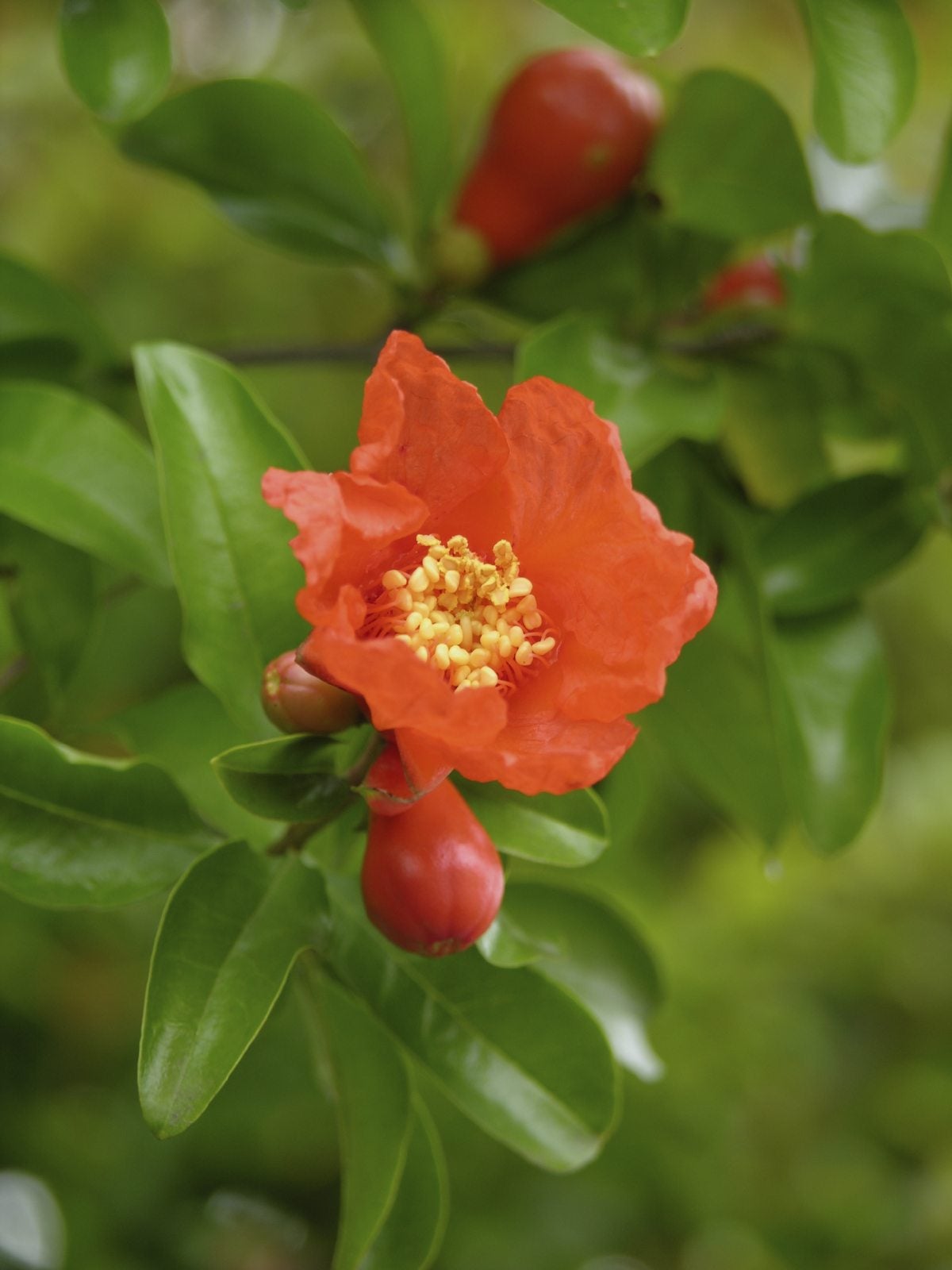
Pomegranate plants are simple to grow and require very little maintenance. The major issue is with pomegranate tree pollination. This leads us to the questions, “Do pomegranates need a pollinator?” or “Are pomegranate trees self-pollinating?”. Read on to learn more about pollinating pomegranates.
Do Pomegranate Trees Need a Pollinator?
Most pomegranates are self-fruitful, meaning they do not require another tree to cross-pollinate with, as the bees do all the work. That said, planting another pomegranate nearby can increase fruit production on both plants. A little cross-pollination doesn’t hurt, but it isn’t necessary. That answers the question, “Are pomegranate trees self-pollinating?”. What might be the issue if your pomegranate does not set fruit or fruit drops before it is mature?
Issues with Pomegranate Tree Pollination
As mentioned, the pollination of pomegranate trees is done by bees. If you have a tree that is not producing, the most likely explanation is a lack of pollinators. There are two solutions here. The first is to hand-pollinate-- a very simple process. Hand-pollinating pomegranates require a delicate, sable artist paintbrush (or even a cotton swab) and a light hand. Gently transfer the pollen from the male stamen to the female ovary. If you have multiple trees, go from tree to tree to cross-pollinate, which will increase the crop. Another option is to attempt to lure more bees to the tree. Install bee houses equipped with larvae. Never spray pesticides. Include a water feature, such as a birdbath or fountain, in the landscape. Lastly, incorporate pollen-laden wildflowers and other pollinator-attracting blooms into your garden to attract the bee who can then get busy pollinating the pomegranates.
Pollination of Pomegranate Trees
To ensure profuse blossoms and heavy fruit production, a little maintenance goes a long way. Another reason for a lack of fruit production is inadequate sunlight. If your plant is in a shaded area, you may want to move it. Pomegranates do best in a soil pH of 5.5 to 7.0 with excellent soil drainage. A good 2- to 3-inch (5-7.5 cm.) layer of organic mulch should be dug in around the shrub. Also, keep the plant well irrigated to thwart fruit drop and splitting. Fertilize in March and again in July with 1 pound (0.5 kg.) of 10-10-10 for every 3 feet (1 m.) of tree height. Lastly, pomegranates flower on new growth. Therefore, pruning needs to be done prior to the emergence of new sprigs in the spring. You only need to remove suckers and dead wood. The fruit is formed on short spurs on the two- to three year-old stems which a light annual pruning will encourage. Keep it light; heavy pruning reduces the fruit set.
Sign up for the Gardening Know How newsletter today and receive a free copy of our e-book "How to Grow Delicious Tomatoes".

Amy Grant has been gardening for 30 years and writing for 15. A professional chef and caterer, Amy's area of expertise is culinary gardening.
